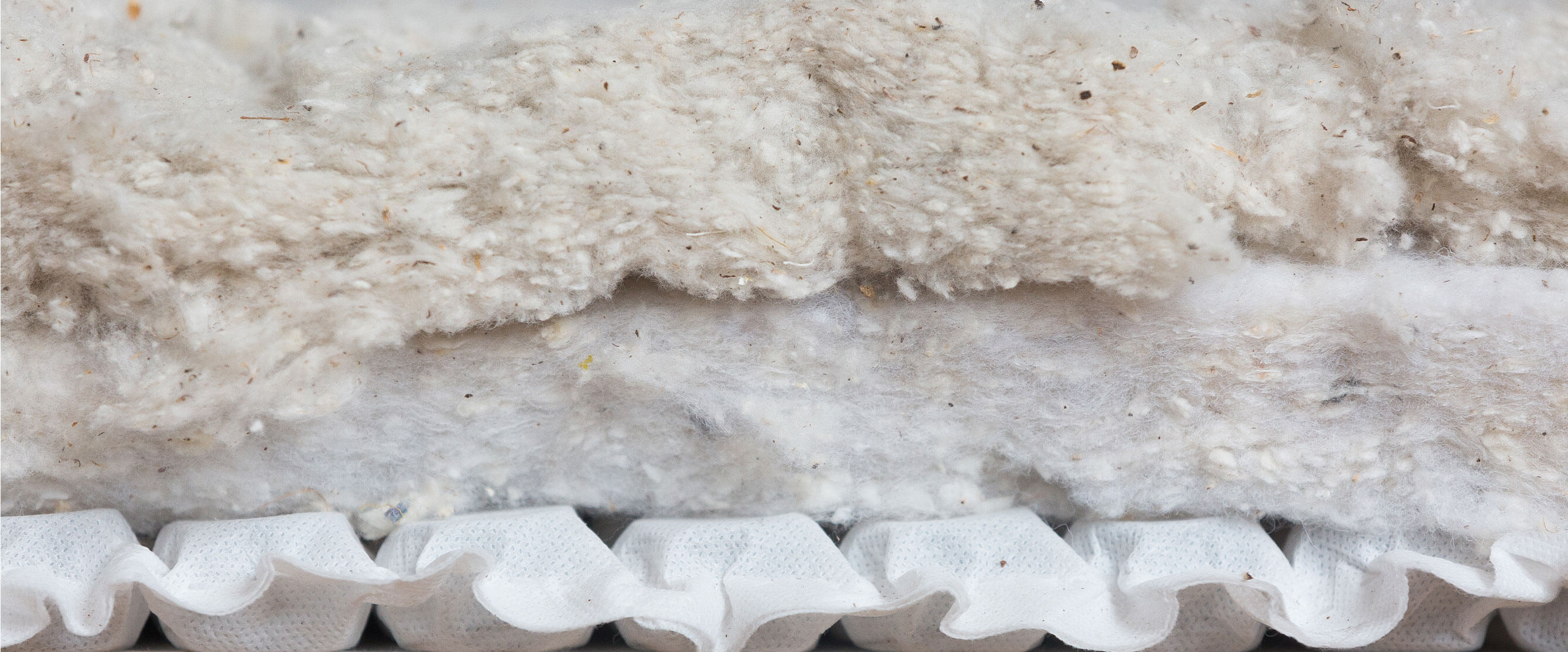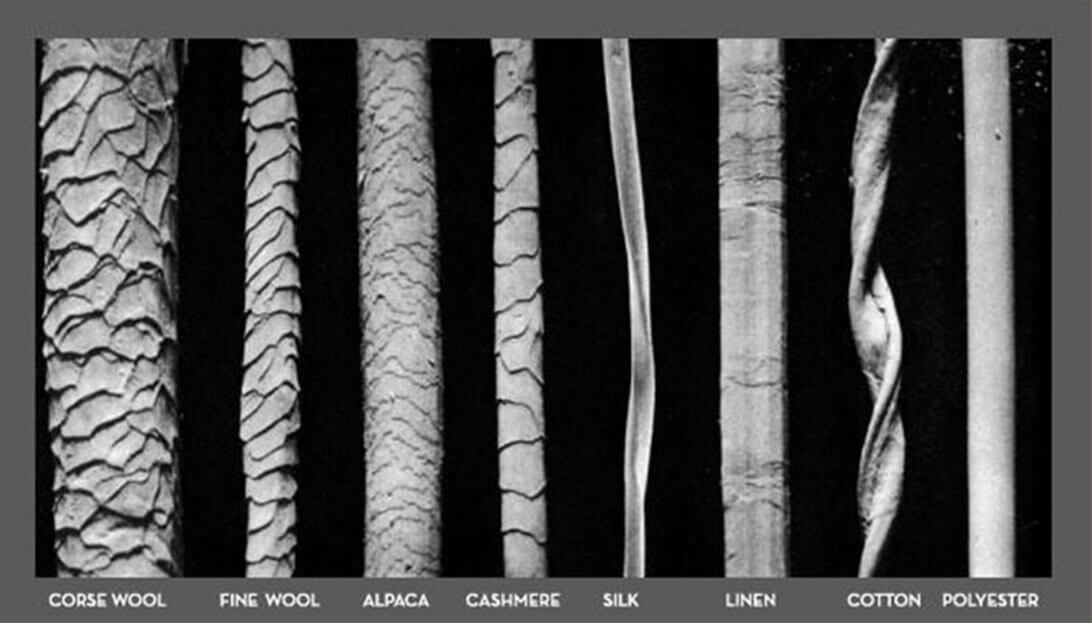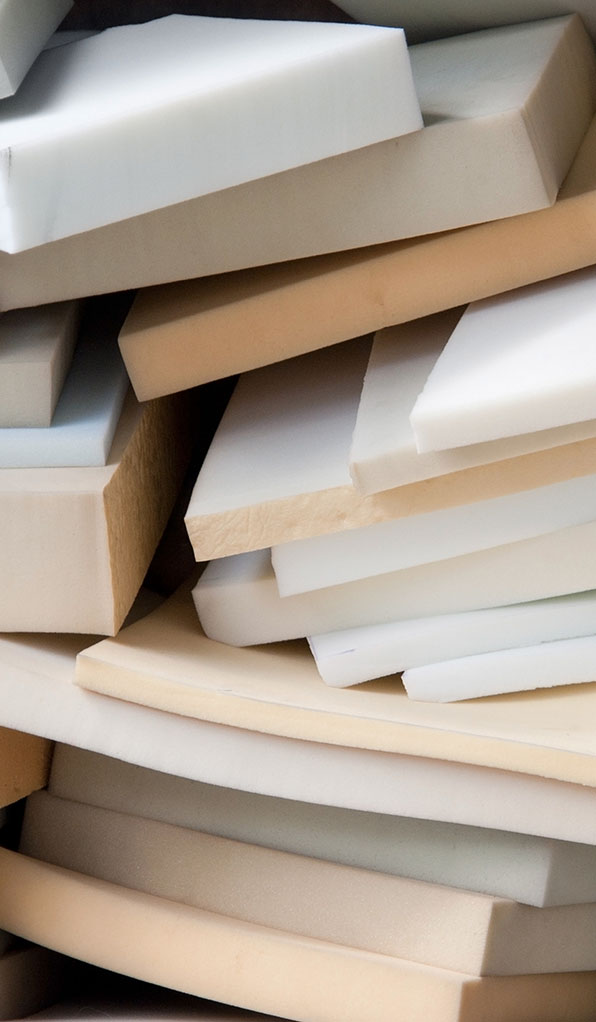
Why Cotton and Wool Make a Better Mattress
Cotton and wool make better mattresses. More than a mere slogan, the physical properties of natural fibers are just better than synthetics. In addition to being safe, non-toxic, renewable and recyclable, natural mattresses help you sleep cooler and more comfortably.

How Wool Sleeps Cooler
Wool is the most comfortable, breathable fiber whether you’re wearing it or sleeping on it. Only natural fibers are truly breathable, and wool is among the best. When we say “breathable” we’re actually referring to the fiber’s absorption and transfer of moisture. Moisture transfer pulls heat and water away from your skin, keeping you cool and dry as you’re sleeping on a wool mattress or wearing wool clothes.

How Wool Sleeps Better
Wool fibers are made of proteins arranged in long strands called fibrils. Each fibril strand has water-repelling outer edges and water-absorbing inner ends. When water and moisture are absorbed, they bond into the wool fiber itself and ultimately evaporate into the air which also releases heat. In addition, wool fibers have tiny scales trapping air in millions of little insulating pockets that also help to regulate temperature.

Why Cotton Makes a Great Mattress
Cotton is similar to wool. It’s a plant based fiber made of cellulose strands (also called fibrils, like wool.) Cotton fibers have a porous, hollow center called the lumen. Cotton easily absorbs water and moisture - up to 9% of its weight - and still feel dry to the touch. The main difference with wool is that cotton will feel wet to the touch at lower moisture absorption levels compared to wool.

Natural fibers have textured surfaces that help trap air and moisture. Synthetic fibers don't.

Why Synthetics are Bad
Synthetic fibers can’t absorb moisture into their fibers, they can only collect moisture in-between their fibers. The absorption ability is measured as the moisture retaining percentage of a fiber’s own dry weight (called ‘moisture regain’):
| Fiber | Moisture Retention |
|---|---|
| Wool | 30.0% |
| Cotton | 9.0% |
| Polyester | 0.4% |
Because synthetic fibers cannot absorb and release moisture; Synthetics do not actively absorb and evaporate moisture, the process that cools and regulates temperature - so you sleep hot. Synthetics feel wet to the touch since water rests on the fiber surface, making them feel uncomfortable (and that interrupts and disturbs sleep.)
Synthetics retain moisture in between their fibers creating a damp, fertile environment for bacteria to grow since synthetics don’t breathe like natural fibers.

Why Natural is Better
Now you understand why chemical free natural fibers are better than synthetics. Synthetics are cheaper and easier to manufacture, especially in mattresses where polyurethane foams and polyester fabrics are common. But natural fibers perform inherently better. And in addition to breathing cooler and being antimicrobial, natural fibers are safe, non-toxic and environmentally friendly.
Only natural materials, whether certified organic or not, can be free of toxic chemicals. A natural bed is either a 100% cotton mattress, or a wool and cotton blend. You can find organic mattresses which are very expensive, or natural mattresses with some organic components.
Some retailers include latex which is derived from trees and can even be certified organic. But latex foam does not breathe and cool like natural fibers.
Natural sleep is healthy sleep.
Natural is Clearly Better
| Characteristic | Natural Fiber | Synthetic Fiber |
|---|---|---|
| Absorbs moisture into the fibers | Yes | No |
| Regulates temperature | Yes | No |
| Feels dry to the touch | Yes | No |
| Anti-bacterial & antimicrobial | Yes | No |
Natural fibers have important qualities not found in synthetics.



